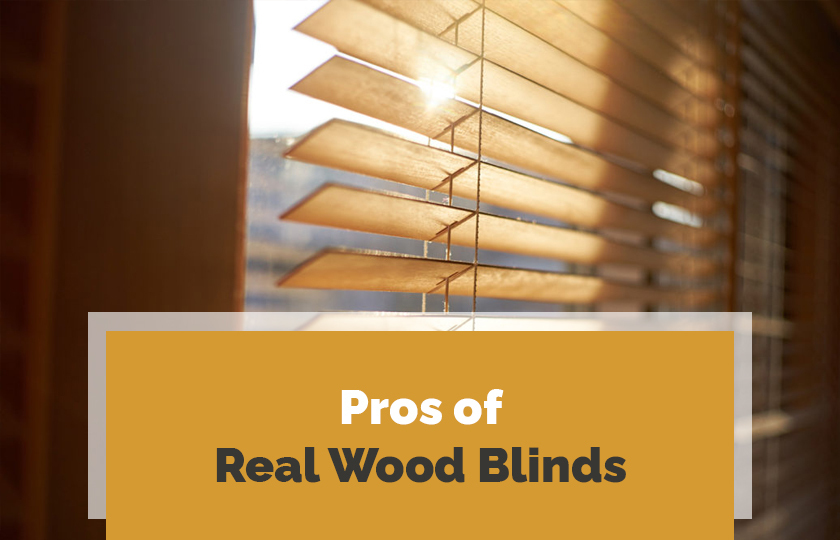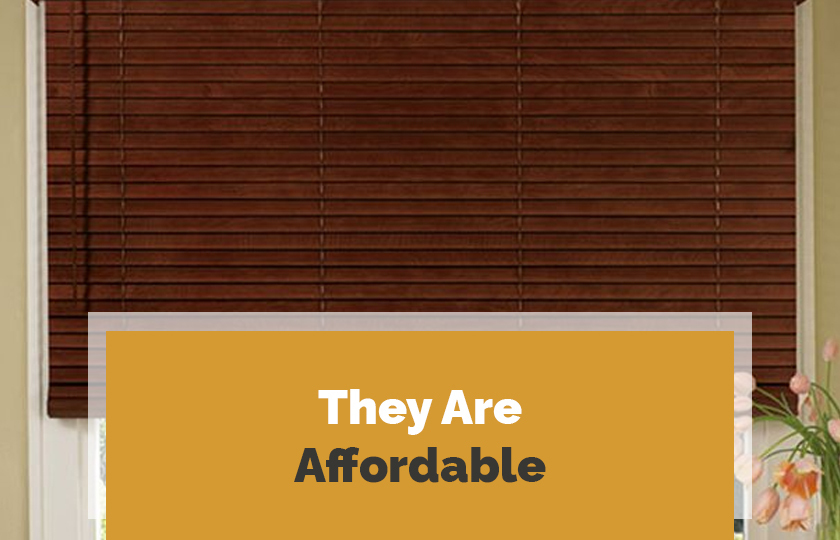You want wood blinds but can’t decide between faux and real wood. Each has its benefits, but it is vital to consider where they are to be installed. For example, window treatments in rooms that experience humidity, like bathrooms and kitchens, should be able to withstand moisture. Other factors such as maintenance and your style preference are also worth considering.
In this post, we discuss the pros and cons of both real and faux wood blinds to help you choose the best one for your Mississauga-area home.
Let’s get started.
Differences Between Real and Faux Wood Blinds
Here are the advantages and drawbacks of faux and real wood blinds.
1. Pros of Real Wood Blinds
The following are the advantages of real wood blinds.
2. They Look Great
When it comes to blinds, the visual appeal of real wood is difficult to match. In fact, its warm and rich texture has a timeless appeal. Wood blinds also pair well with wooden furniture and add a touch of style.
3. They Are Good Insulators
Wood is a great insulator that offers optimum protection against weather. Plus, they block harmful ultraviolet rays and reduce heat gain. These qualities make real wood blinds a great option for energy efficiency because they decrease energy consumption and lower your energy bills.
4. They Require Medium Maintenance
Wood blinds can be dry-dusted using a clean cloth every day. For deep cleaning, avoid water as it can damage the wood. Instead, use a clean cloth sprayed with lemon oil or furniture polish.
Cons of Real Wood Blinds
One of the drawbacks of installing these custom wood blinds in your Mississauga home is that they cannot withstand moisture. This makes them unsuitable for humid rooms like the kitchen, laundry room, or bathroom. Prolonged exposure to humidity also causes real wood to fade or warp.
Pros of Faux Wood Blinds
Here are the pros and cons of installing faux wood blinds.
1. They Are Highly Durable & Moisture Resistant
Compared to real wood blinds, faux wood blinds are more resistant to moisture. This means they do not fade or warp when exposed to humidity. Plus, they do not chip, peel, crack or become yellow as they are made from a highly durable polymer that inhibits UV rays.
2. They Are Affordable
Faux wood blinds are made from synthetic materials, such as PVC, which is less expensive than real wood. However, their price difference does not affect their performance. Although the choice of colours is limited, unlike real wood, faux wood blinds match well with any home decor.
3. They Are Easy to Maintain
Another key benefit of faux wood blinds is that they are low maintenance. Just wipe them regularly with a cloth. They can also be deep-cleaned either by hosing them down or immersing them in water without worrying about warping or other kinds of water damage such as mould.
4. Cons of Faux Wood Blinds
In terms of appearance, it’s hard to compete with real wood blinds. Also, unlike real wood, you cannot re-stain faux wood. So, if you want a different colour for your living room or bedroom, then you have to buy a brand-new set.
These are the pros and cons of real and faux wood blinds. Now it is time to choose what suits your preference, decor, and budget. While real wood blinds have excellent visual appeal and are good insulators, faux wood ones are durable and easy to maintain. Are you looking for motorized or smart blinds for your Mississauga home? To choose the right type of window treatment for your space, call our experts.


